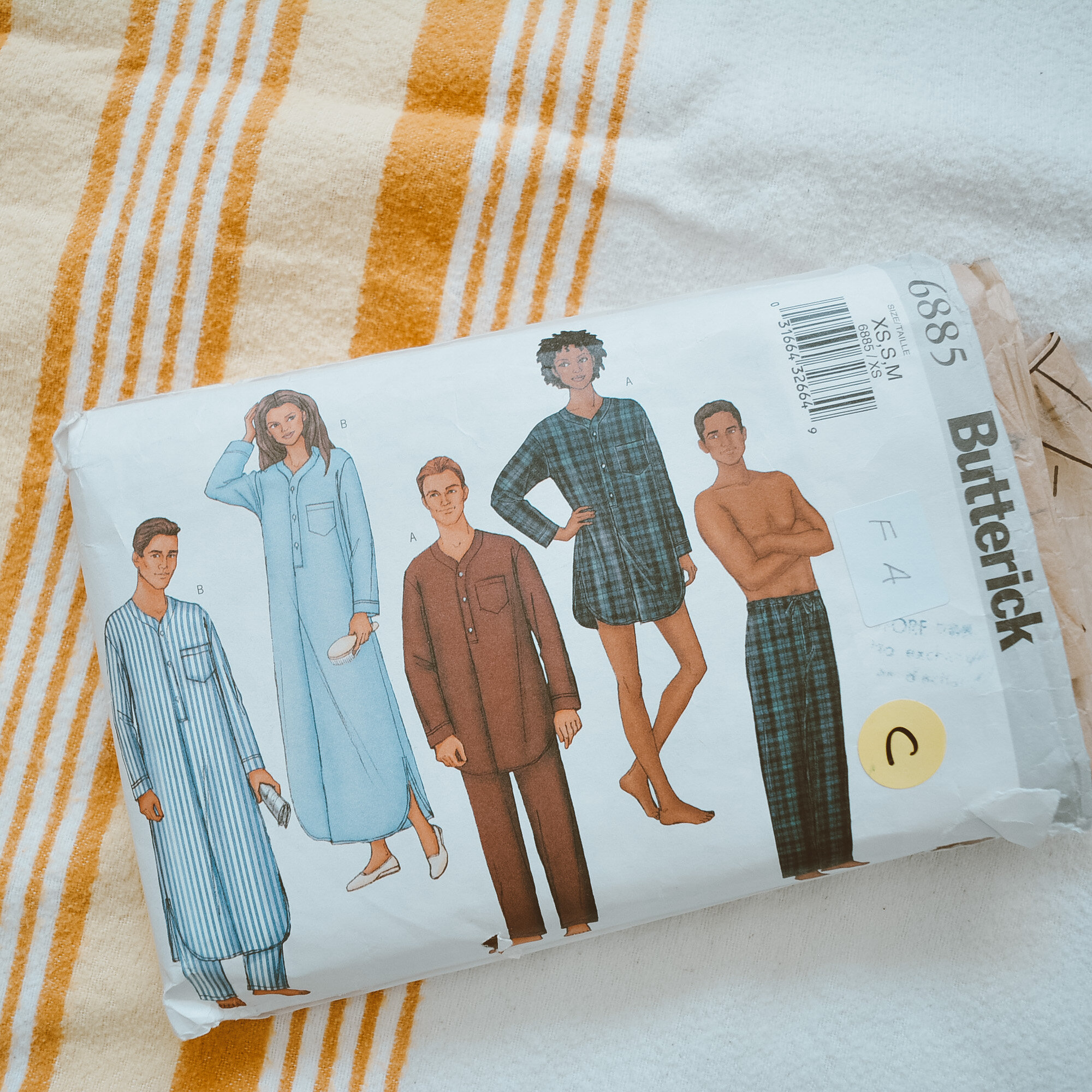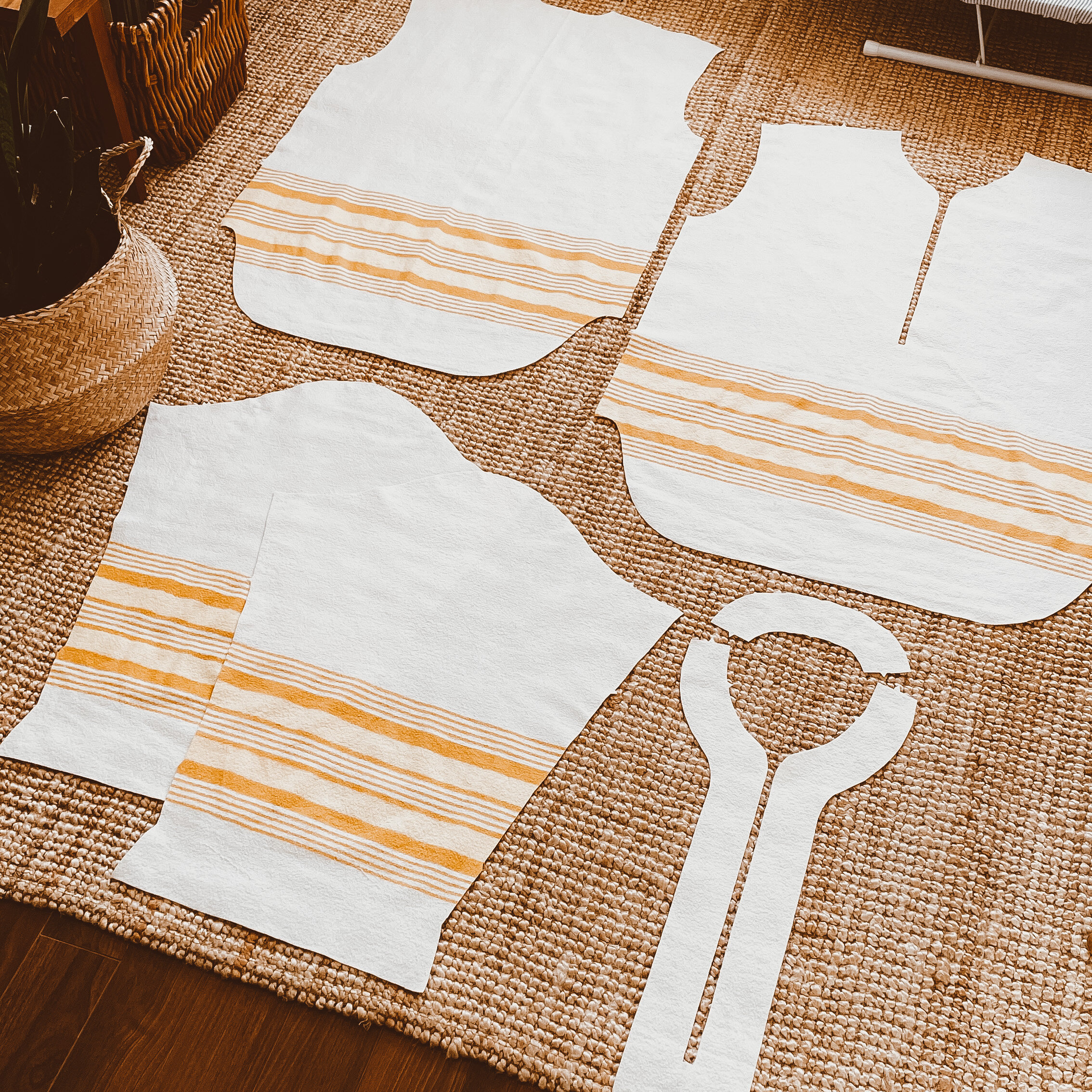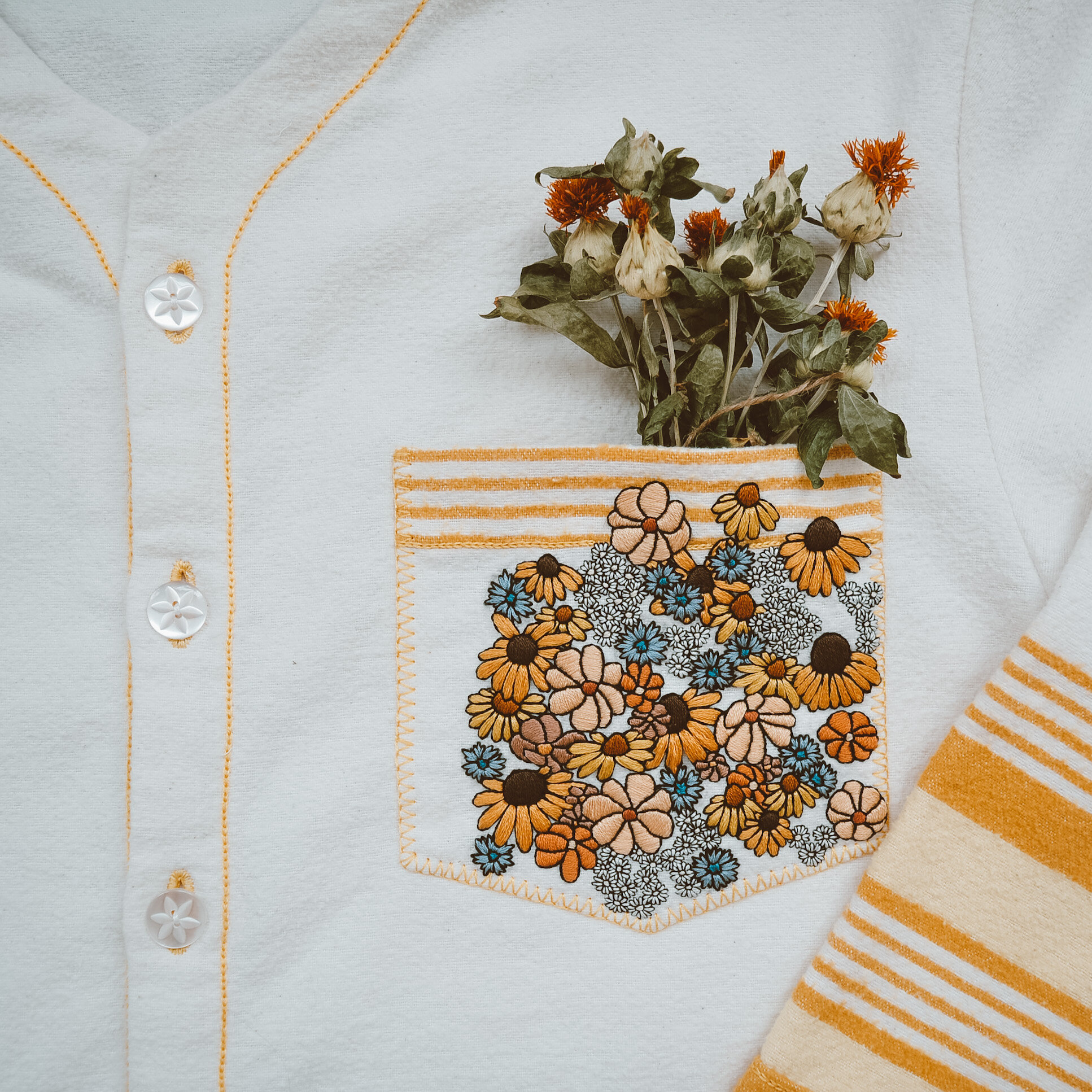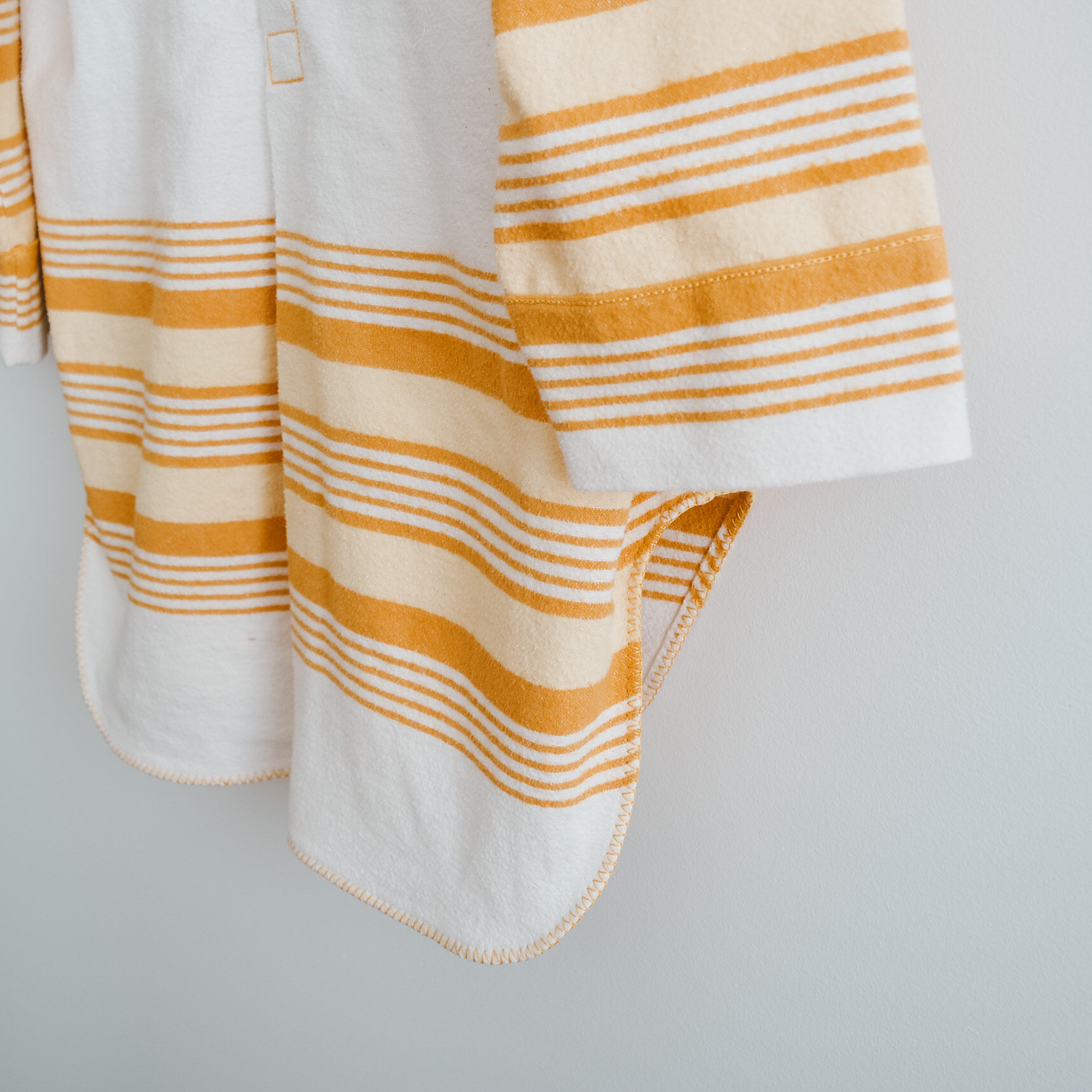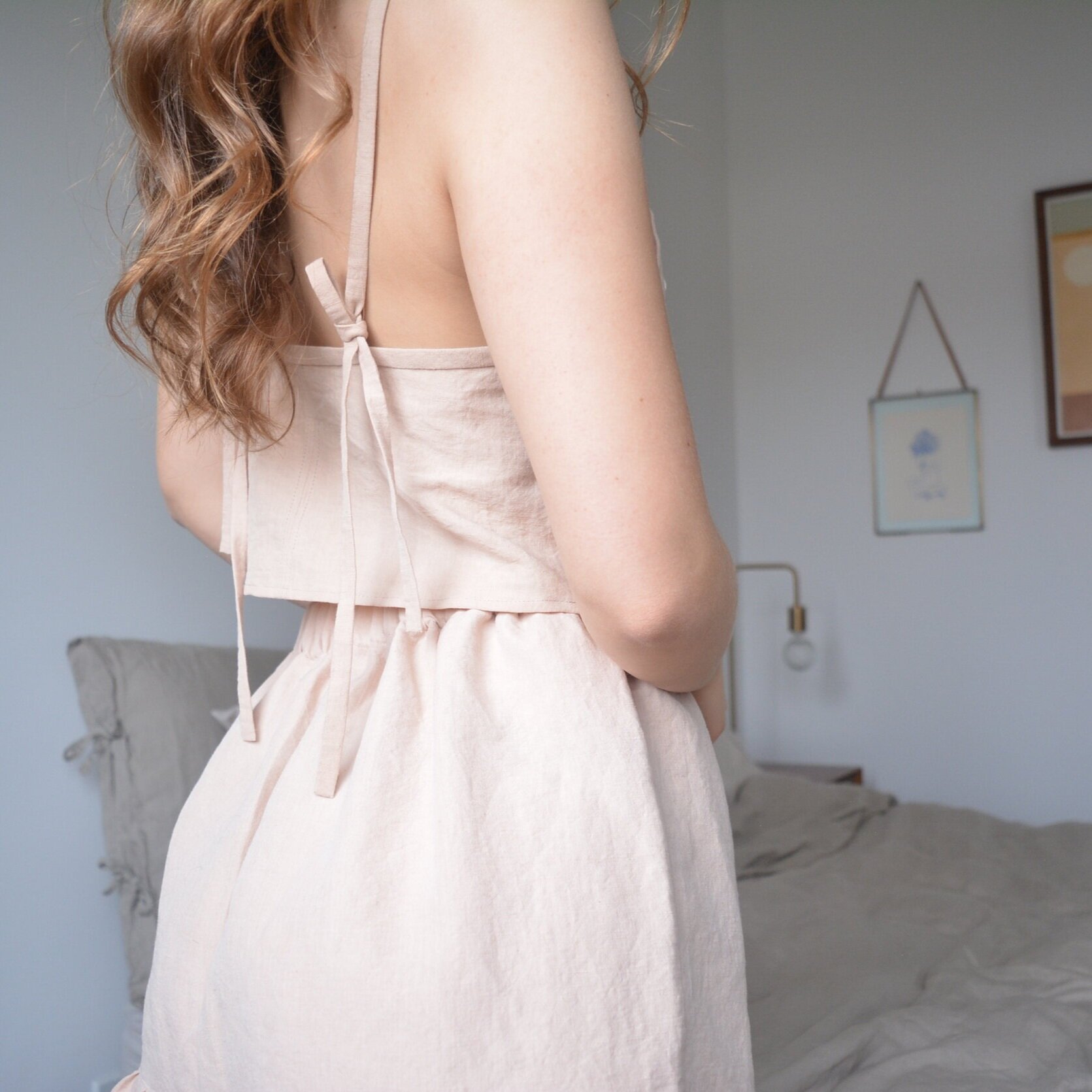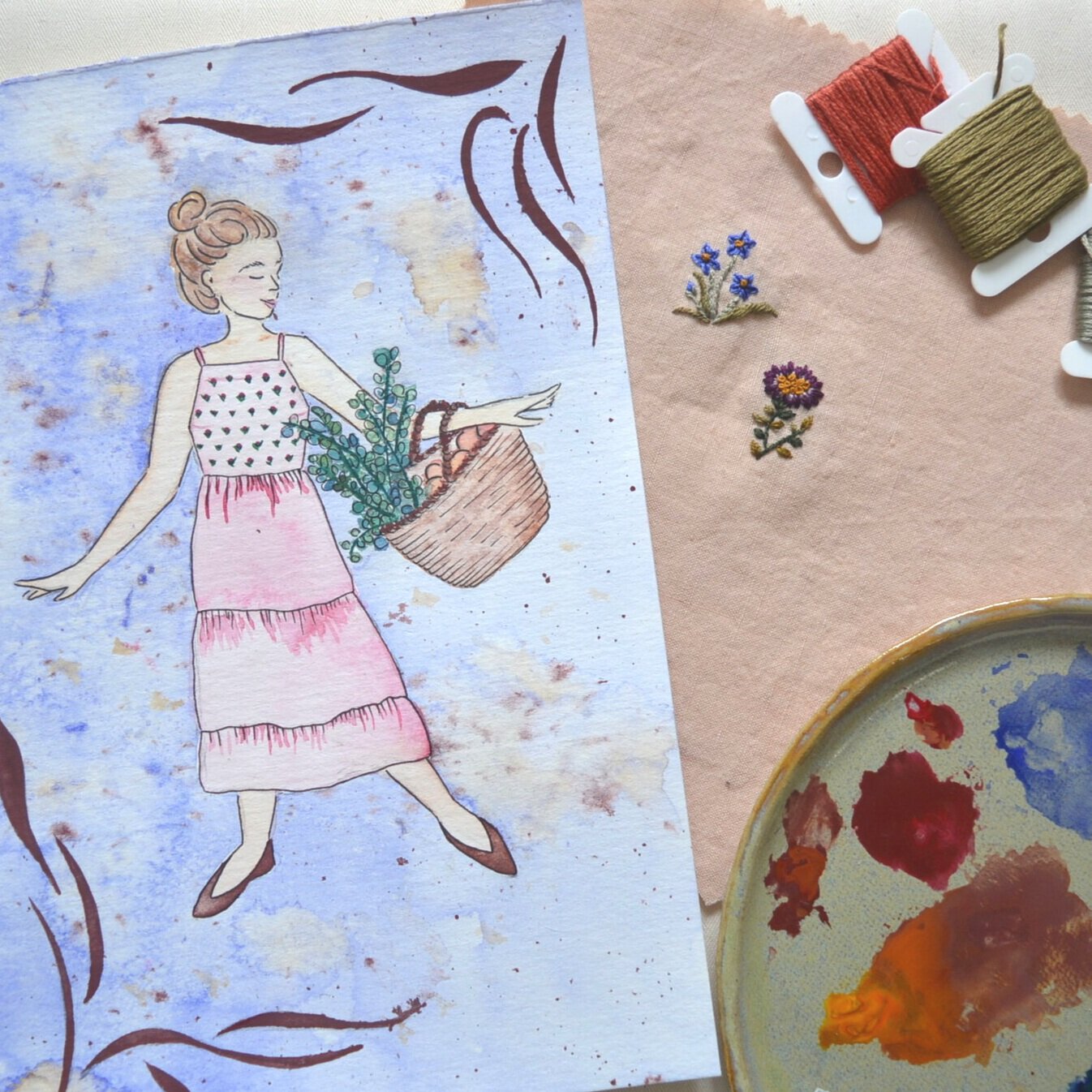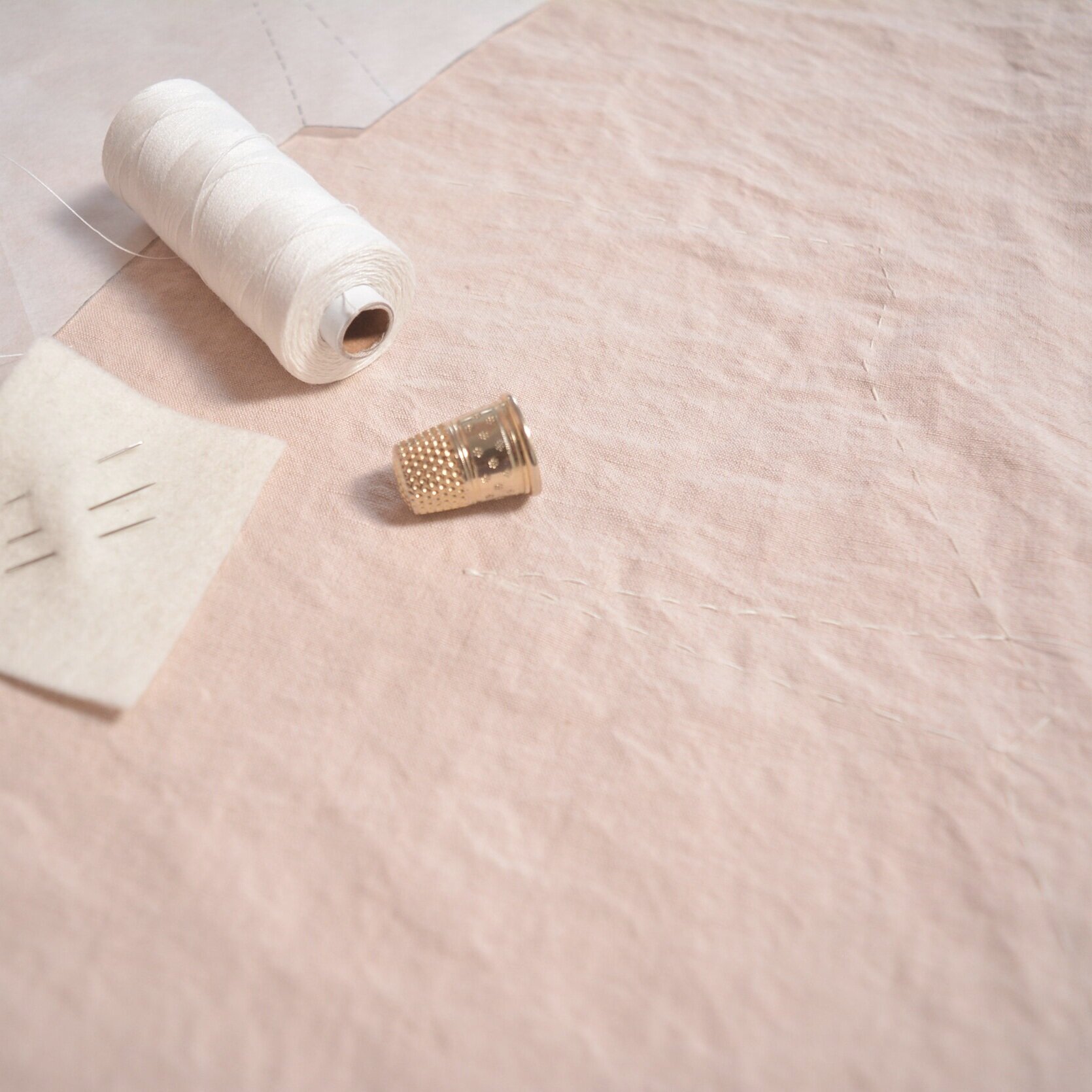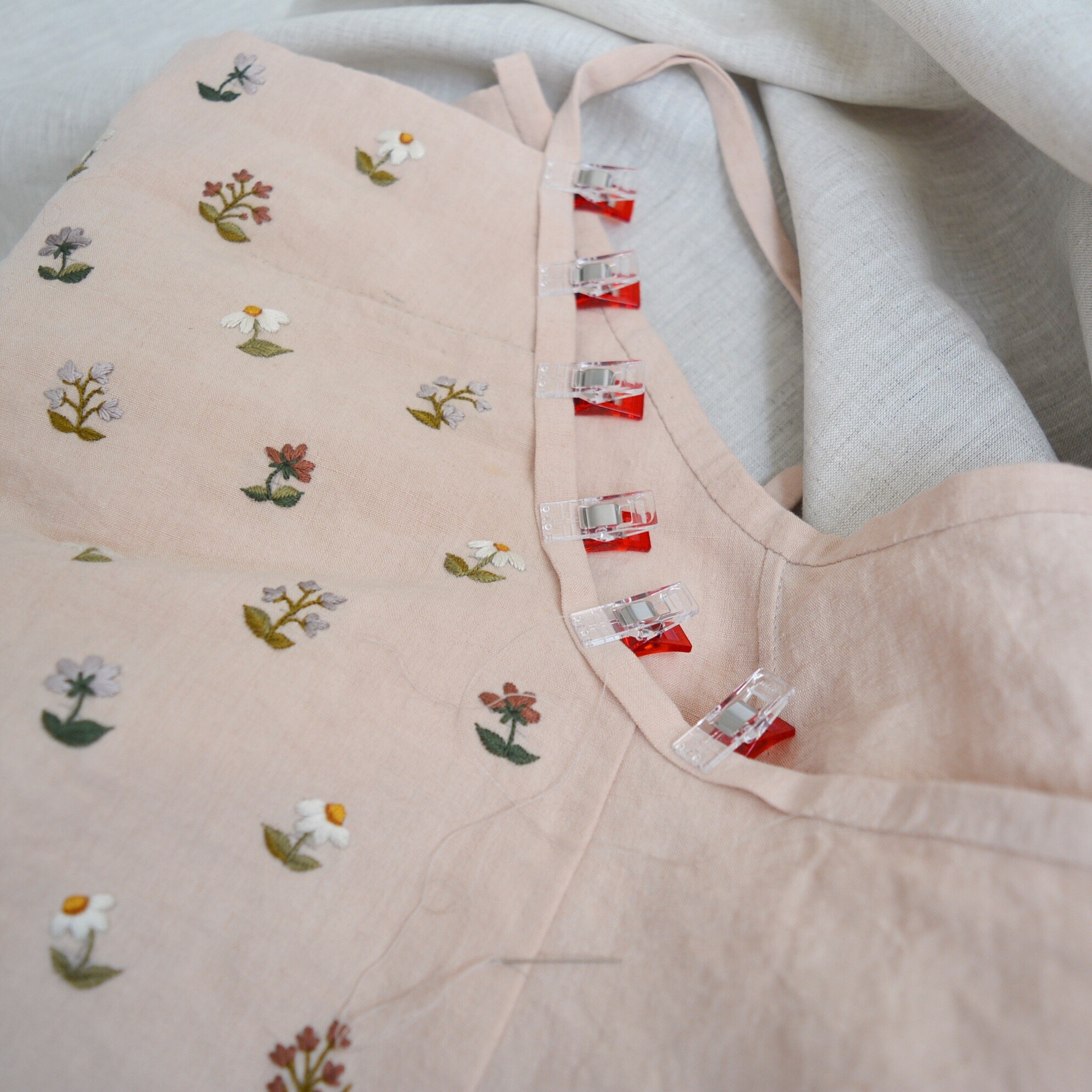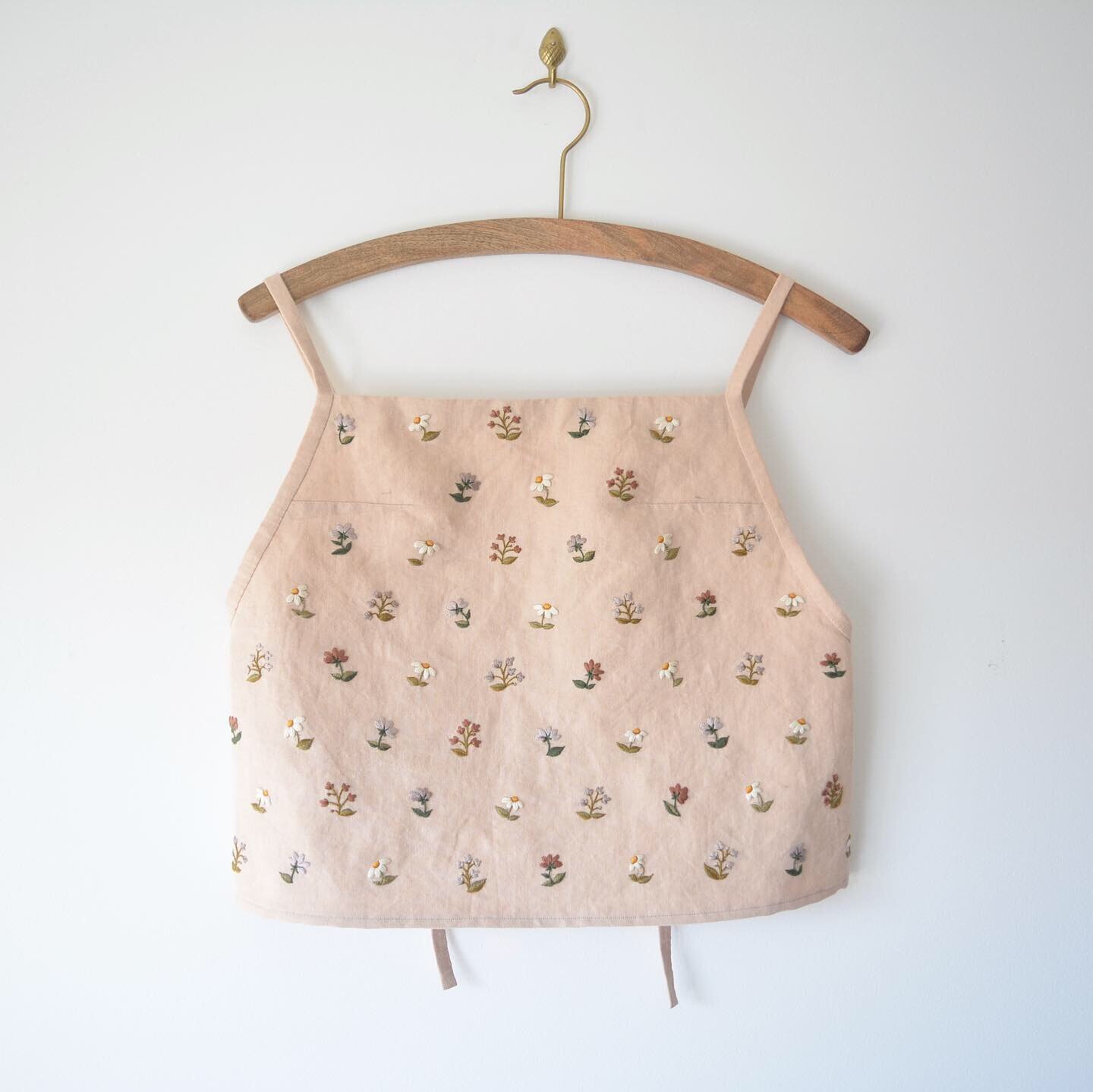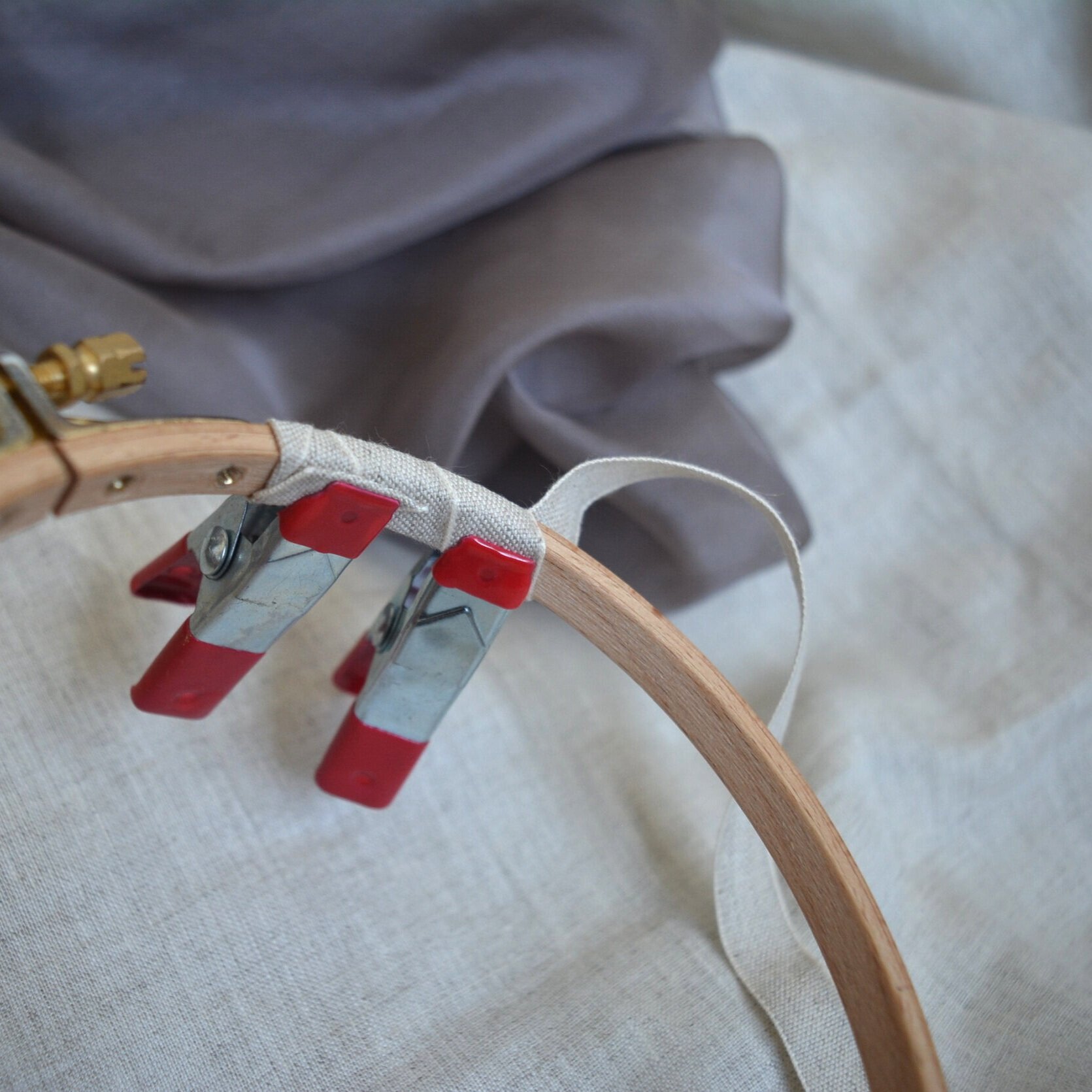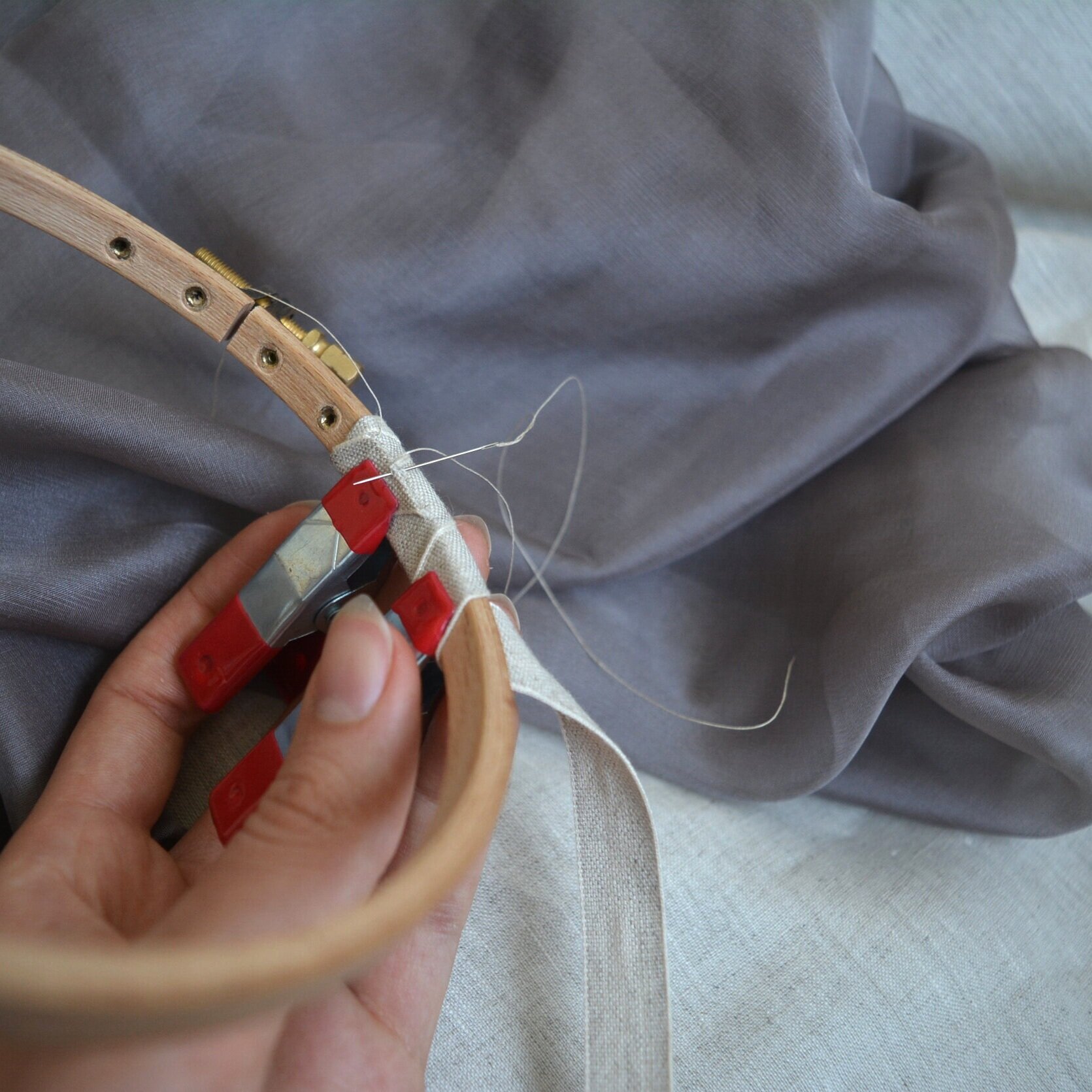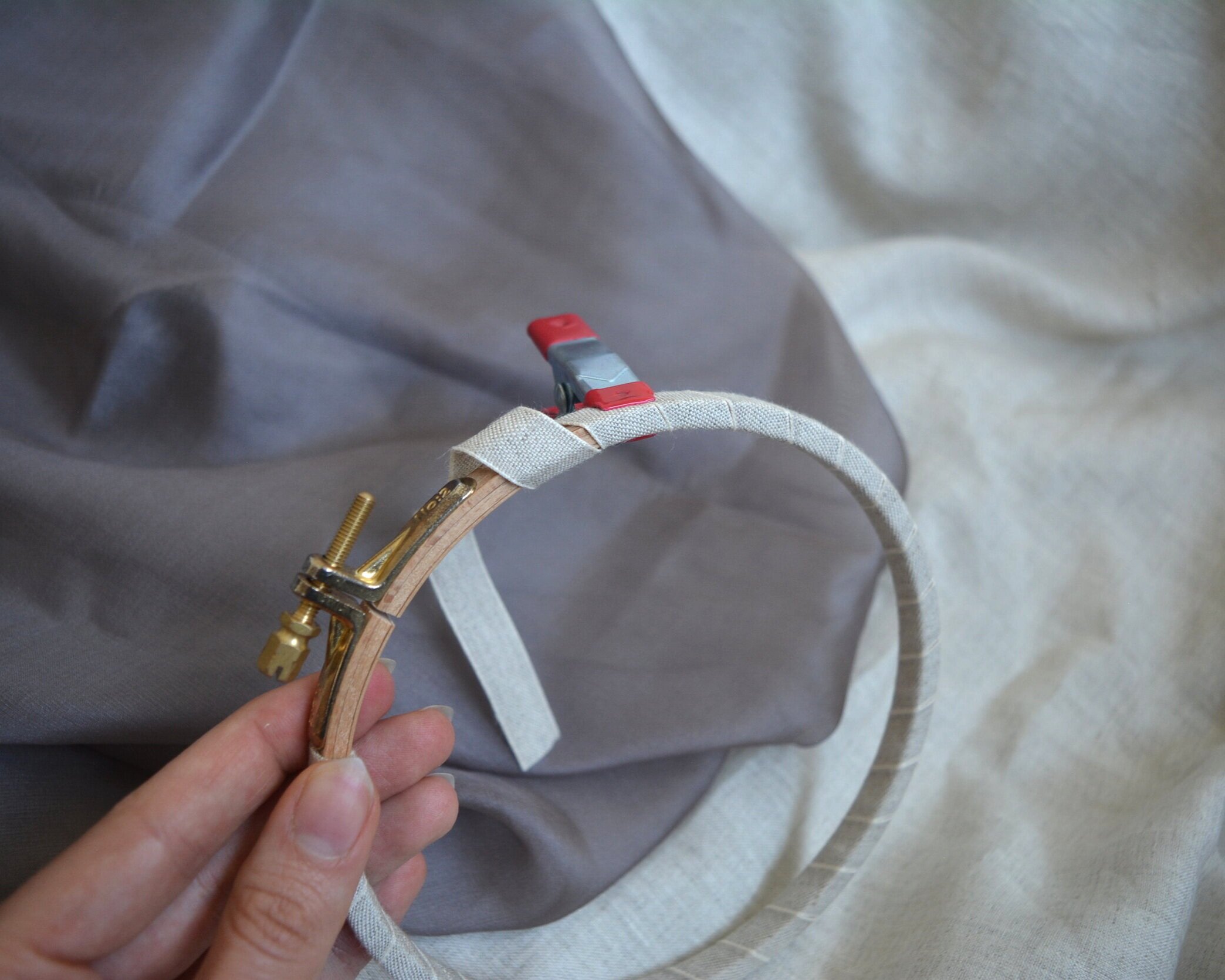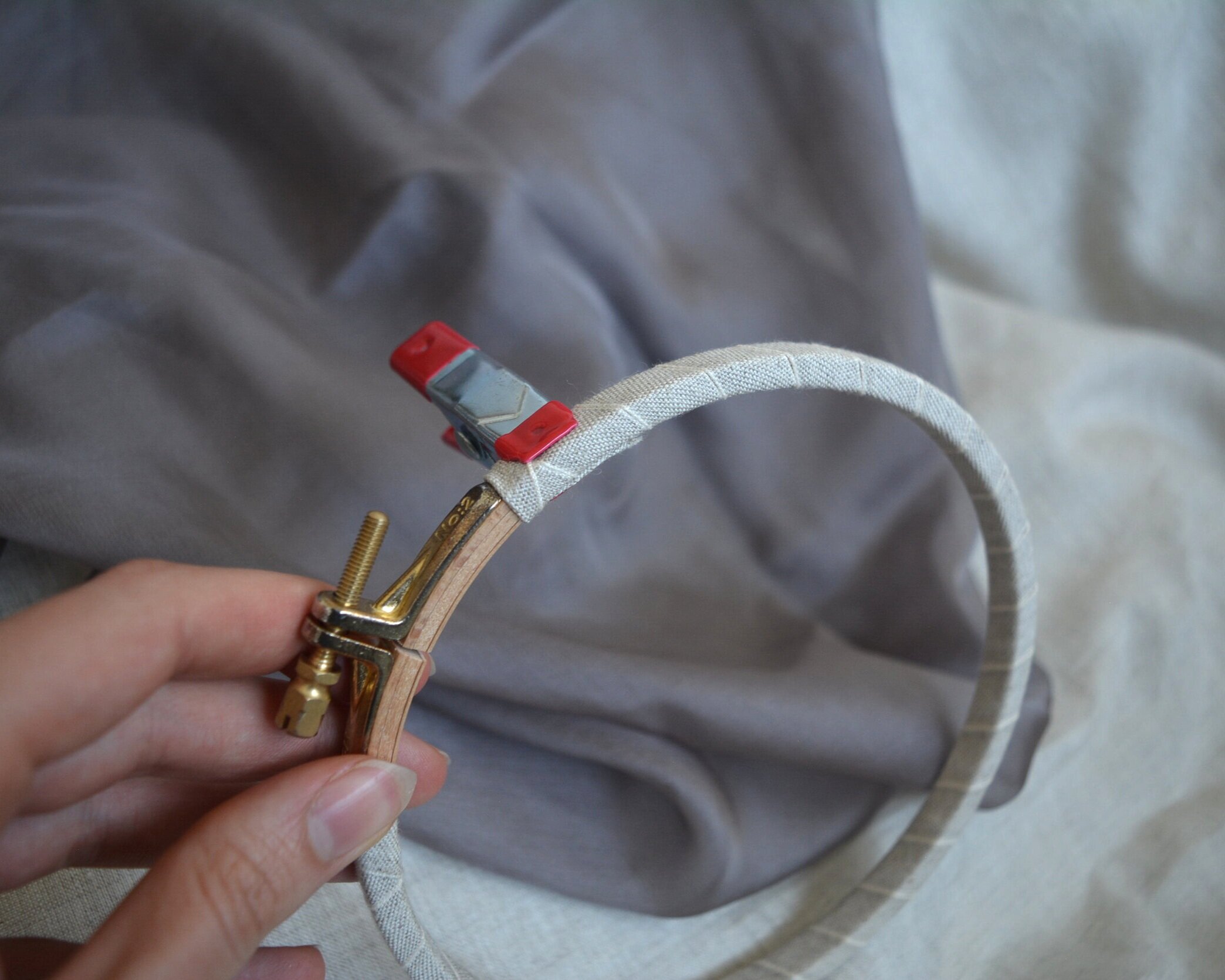Sewing a Nightshirt from a Thrifted Texmade Ibex Bedsheet
/Since I've started obsessively thrifting I have a new joy for sewing and embroidery. This was my first full circle project that started with me getting giddy in a thrift store about a Texmade Ibex bed sheet that brought me right back to my childhood. I love that feeling of nostalgia I get in thrift stores, but the sheet had so many holes and stains that I just enjoyed the memories that seeing it brought me, and then carried on my way. As I worked my way through the rest of the thrift store I just could not stop thinking about it. When I was younger my siblings and I had these same flannel bedsheets (in a different colour way) and we also had matching pyjamas made out of the same striped flannel. On top of that my teddy bear even had matching pyjamas! So when I got the idea to turn this damaged sheet into an adult version of those pyjamas I basically ran back to the linen department of the thrift store to scoop it up.
This nightshirt wasn't exactly on my list of things to make for the upcoming season, or for my home, but it was just such a fun idea in my head that it got bumped to the front of my project queue and I've been working on it almost non-stop for the last month. I wanted to make it really special with some embroidery on the front pocket and the edges finished with the same blanket stitch that the sheet edges are finished with. I'm using a vintage sewing pattern here that I found on Etsy: Butterick 6885. It's a unisex pattern for a nightshirt and pants. After cutting out the pieces for the nightshirt it looks like I might have enough leftover to make some shorts, but anyways that will be a later project, I usually just sleep in a nightshirt anyways.
For the pocket piece I cut it in a way that would be mostly blank fabric with just a bit of the stripe running along the top. I needed a blank canvas for the embroidery but I still wanted it to tie in nicely with the stripes on the shirt. I used an embroidery pattern by Sarah K. Benning called Summer Flowers. It's not available currently on her website but a couple times a year she will do a re-release of all her old embroidery patterns. It was a pretty fiddly embroidery pattern but my main frustration with it was that I just could not get the pattern transferred onto the fabric. Usually to transfer patterns I just trace them with pencil or use some graphite transfer paper, but the flannel was too fluffy for this and it was so hard to get even the most basic shape of the flowers down. So basically I ended up just eyeballing it flower by flower which worked well enough. Next time I work with flannel I'm going to buy some of that paper that you print the pattern onto, embroider, and then it dissolves away in water. There was also a lot of outlining on this pattern but I actually loved that and found it very relaxing.
Once I had the embroidery done I could cut out the pocket piece and start assembling the night shirt. Attaching the pocket is the first step of the pattern so I couldn't start the until the embroidery was done. The shirt came together very fast, only slowed down by the fact that I wanted to do so much hand-stitching on it. I used a closed blanket stitch to attach the pocket and hem the bottom of the shirt, and I used chain stitch around the collar and the sleeve cuffs. I am so happy with this nightshirt, it almost feels too beautiful to wear to bed.
Making this just really made me so enthusiastic about all the possibilities there are when it comes to thrifting. I would have never thought to make something like this if I hadn't seen the sheet and got the inspiration from that first. Another section in the thrift store that I've been getting a lot of inspiration from is the table linens. There are often such beautiful hand embroidered napkins and tablecloths. Sometimes stained from years of families gathering and enjoying meals, but if cut the right way could be made into summer dresses, camisoles (something like my Wattlebird Cami), and baby clothes. Anyways, now back to my list of things I would actually like to have done by summer! I would like to sew a couple more lightweight summer dresses and I have a wedding dress I need to start planning as well!



